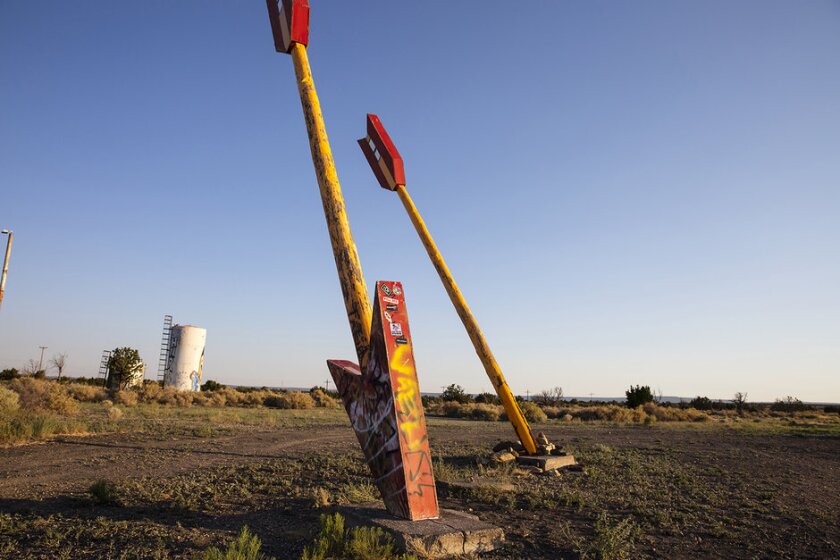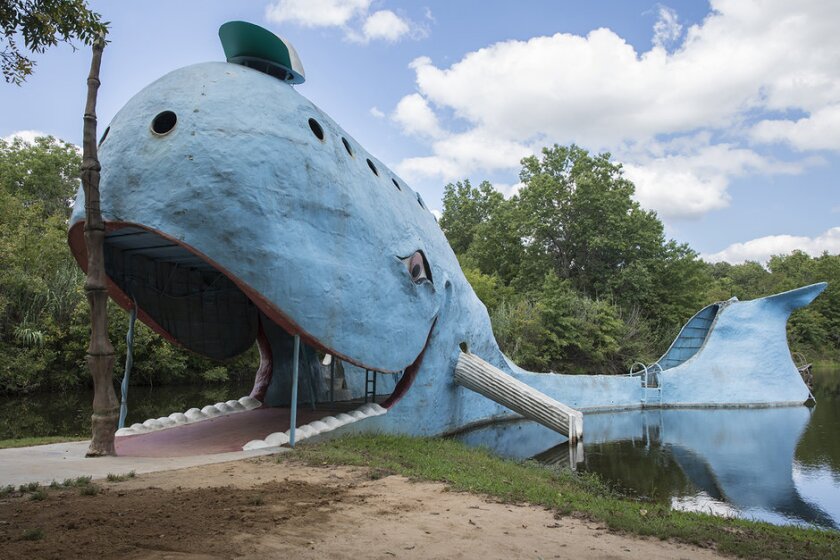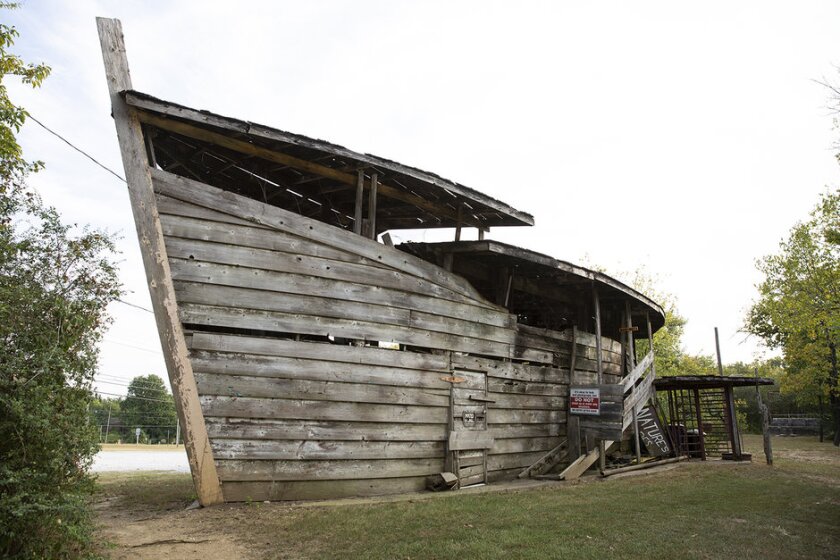Lighting up the Desert
Last November, several hundred people came out to watch a neon sign blink back to life in California’s Mojave Desert. It had been three decades since “ROY’S MOTEL CAFE” lit up the evening sky. The giant sign and a reception office are surviving examples of mid-century modern design with their bold geometric shapes and colors, reflecting the space-age optimism of the time. Roy’s is one of thousands of motels, gas stations, restaurants and roadside attractions built along Route 66, designed to grab the attention of passing motorists. Today, the survivors are few and far between, some in pristine condition, others on the brink of oblivion. But there is a growing interest in preserving what’s left.Celebrated in song, TV, booksand movies, Route 66 is the most famous road in America. The 2,448-mile highway connected Chicago with Los Angeles when it was established in 1926 and went through a number of realignments before it was finally decommissioned in 1985.
A shift in the '30s brought the road to Amboy, Calif., where Roy Cowl built a service station and café to serve travelers passing through, eventually adding a row of tourist cabins for overnight guests. When the postwar boom began, Roy’s was open 24 hours a day, seven days a week, employing 70 people, a tenth of the town’s population. In 1959, the neon sign was erected, along with a similarly futuristic reception office. The sign served as a beacon for desert travelers until 1972 when Interstate 40 opened, completely bypassing Amboy. Roy’s business dried up overnight.
Roy’s continued to operate sporadically, selling gas and snacks in the ensuing decades. The town’s population dwindled to single digits and the dilapidated property became a favorite location for filmmakers and photographers. Roy’s, and a few scattered buildings, were sold in 2005 for $425,000 to Albert Okura, owner of a rotisserie chicken chain of restaurants and the site of the original McDonald's, which he operates as a museum. Okura’s interest in preserving mid-century Americana means that even without a major highway, the recent restoration of a neon sign gives hope that Roy’s will be here for years to come. Originally designed as a stopover on the way to somewhere else, the remote desert outpost has become a destination unto itself.

The Roy’s sign before its recent restoration.
route-66-02.jpg
The guest cottages at Roy’s will need a lot of work before they can be used again.Missing Their Target
A little more than 300 miles to the east of Amboy, another Route 66 icon is fading fast. Originally known as the Canyon Padre Trading Post, the northern Arizona rest stop did a moderate business serving travelers in the late 1940s. Business picked up considerably a few years later when the owners added a service station and diner. Most importantly, they changed the name to Twin Arrows, an answer to the neighboring town of Two Guns. Two 25-foot telephone poles were anchored to the ground at an angle, outfitted with plywood feathers and arrowheads, then painted in bright colors. The addition of the giant arrows turned an ordinary stop into a roadside attraction where tourists and travelers could gas up, buy souvenirs and get a meal.The construction of I-40 across northern Arizona in the '70s did not immediately bring an end to the business. Instead of redirecting traffic away from the Trading Post, the new road runs right beside a remaining short stretch of Route 66 and the giant arrows. A close-by exit from the interstate helped the roadside attraction survive, at least for a time. The business managed to stay afloat until 1995 when "The Best Little Stop on I-40" closed for good. Left on its own by the side of the road, the Twin Arrows Trading Post became a target for vandals and graffiti artists, and the two telephone pole arrows began to shed their feathers and points. The arrows got a makeover a decade ago but are no longer a lure to travelers speeding by at 70 miles per hour.

Once a lure for hungry travelers, motorists hardly notice the decaying twin arrows.

Vandals and exposure to the elements have taken a toll on the old trading post.
Save the Whale
A few months ago, the city of Catoosa, Okla. bought a big blue whale. They found it by the side of the road, which happens to be Route 66. Made of cement over a frame of metal pipes, the 80-foot-long Blue Whale of Catoosa was created in 1972 by Hugh Davis, a long-time director of the Tulsa Zoo. Constructed over two years with cement covering a metal frame, the smiling blue cetacean was an oversized anniversary gift for his wife Zelta, an avid collector of whale figurines.Before Blue took up residence in the family pond, Hugh built and stocked two petting zoos on the property, one of them resembling an ark. Known as Natures Acres, the menagerie became a popular stopping place for travelers on the famous highway. In the early years, kids could dive off the whale’s tail and slide into the pond on one of the fins in its sides. The whale, the water hole and zoo were popular for the next 15 years. But as the retired zookeeper and his wife grew older, they found it increasingly difficult to keep up with the maintenance. After they closed it in 1988, the ark fell into disrepair, Blue faded to gray, and vandals defaced the property and took whatever they could.
By 1995, it looked like the whale would sink into oblivion. There was talk of demolition. But then Hugh’s son Blaine Davis came home to take up the cause of his saving his father’s concrete creation. With the help of local volunteers, a hotel chain and the Catoosa Chamber of Commerce, he set about resurrecting the Blue Whale to its former glory. Even then-Gov. Frank Keating stopped by to do a little restorative painting. A testament to its enduring appeal, the Blue Whale of Catoosa is prominently featured in Oklahoma tourism promotions and has appeared in a number of TV shows and commercials.
The city of Catoosa paid almost $2 million for Blue and the surrounding 24 acres of land and has thoroughly cleaned the star attraction, fixed up the bathrooms and cleared overgrown brush. Plans call for opening up more walking paths and making improvements without altering the general appearance of the park, giving Blue a good reason to smile.

Having survived a period of neglect, the Blue Whale is again one of the most celebrated icons on Route 66.

The A.R.K. (Animal Reptile Kingdom) was an attraction at Natures Acres.








